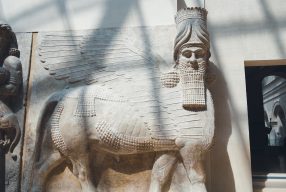Sadie Alexander on Black Achievement
Nina Banks—
Sadie Alexander was an outstanding economic historian whose speeches relied heavily on her knowledge of European and American history. Prior to taking courses in European history at the University of Pennsylvania, Alexander studied the history of African Americans while a student at the M Street High School, which was established by Congress in November 1870 as one of the first public high schools for African American students (its original name was the Preparatory High School for Negro Youth). An all-Black, college preparatory high school in Washington, D.C., M Street became renowned for the many high-achieving African Americans who attended the school or worked there as faculty. The school provided young Black students with opportunities to learn from prominent Black intellectuals who either taught at the school or gave invited talks to students, including Booker T. Washington, W. E. B. Du Bois, and Mary Church Terrell. The eminent historian Carter G. Woodson began teaching at M Street in 1909 and taught French, Spanish, English, and history. Woodson had the greatest influence on Alexander’s thinking about the important place of people of African descent in American history. Her education about the critical roles that African Americans had played in the development of the nation supported her belief that public schools could decrease racial intolerance by educating their students on African American contributions. When Alexander later reflected on her own schooling, she said that her education in African American history at the M Street School gave her confidence that she could succeed at the University of Pennsylvania if she applied herself.
Alexander would draw on this confidence to endure the hostile treatment of African American students and their cultural heritage she encountered as a college student. On the first day of an undergraduate sociology class, a professor asked students to list on paper the superior and inferior races and the reasons for their assessments. The majority of white students listed whites as superior and Blacks as inferior; some Black students made the same assessment. White students cited wealth holding as a source of white superiority while also claiming that Blacks were “parasites.” Years later, Alexander stated that the absence or belittling of Black American accomplishments in historical accounts contributed to the belief in Black inferiority. It is no surprise, then, that Alexander’s earliest speeches tried to dispel notions of Black inferiority and inadequacy from the minds of her Black audience members by giving a more accurate account of African Americans in U.S. history.
Alexander’s proclamations about Black contributions to the nation and African American fitness as citizens came at a time when Black racial inferiority was a prevailing belief. From the Progressive era through World War II, eugenicists popularized claims that racial differences in living conditions stemmed from biology. They found fertile ground within the discipline of economics because of its embrace of scientific methods of analysis for explaining human behavior and economic outcomes. Walter Willcox and Francis Amasa Walker, both central leaders in the development of the American Economic Association, believed that statistics could provide objective facts about the “Negro problem.” Believing that African Americans were physically and intellectually inferior to whites, proponents of the Willcox school advanced the “Black Disappearance Hypothesis”: that African Americans would eventually die out in the United States. This theory helped to allay white fears that “degenerate” Black people would overwhelm whites. Other notable economists who were proponents of eugenics were Irving Fisher, Richmond Mayo-Smith, Jeremiah Jenks, John R. Commons, Carlos Closson, Thomas N. Carver, and Frank A. Fetter.
Even Abram Harris Jr., who became the second African American economist in 1930 and would become the most prominent African American economist by midcentury, expressed support for biological explanations of behavior in his early research. Harris wrote his master’s thesis in 1924 on Black migration to Pittsburgh, Pennsylvania. He believed that heredity and environmental factors contributed to criminal activity among migrants, and claimed that most arrests were of “feebleminded” southerners who were unprepared for the complexity of northern urban life. In discussing African Americans who were arrested, Harris wrote, “The exigencies of the economic order have thrown these feebleminded people along with their more virile kinsmen into the midst of an intricate community life where many persons who are more nearly normal find it difficult to adjust themselves.” Harris’s views on Black southerners was in stark contrast to that of Alexander, who believed that southern Blacks’ principal handicap was lack of formal education—a problem that she believed they would overcome through access to education and training available in northern cities.
Sadie Alexander challenged the prevailing anti-Black sentiment, and the intense anti-Black violence that resulted from it, by arguing that Black contributions to the nation proved they were supremely fit citizens. From World War I to the early 1970s, some eight million African Americans migrated from the South to northward destinations. In the process, they transformed the African American population from primarily rural and southern into one that was increasingly urban and northern. African Americans migrated North hoping to build better lives for themselves and their children by gaining access to educational, economic, and political opportunities and rights. They also wanted to escape from the ever-present tyranny of white violence. They found, instead, that northern whites also subjected them to racial segregation, blocked job opportunities, and terrorized them just for being Black. To take just a few examples, whites confined Black workers to low-wage jobs in manufacturing or domestic service and created urban ghettos by restricting African American access to housing and mortgages. And during the World War I era, when Alexander was an undergraduate and graduate student in economics, white mobs terrorized African Americans across the country, massacring hundreds of Black people and destroying their homes, businesses, and communities. In May 1917, in East Saint Louis, Illinois, some three thousand white union members marched in protest against African American migrants, then went on a murderous rampage in July that lasted for several days. They set homes in African American neighborhoods on fire—killing African American men, women, and children as they fled and leaving approximately six thousand people homeless. In the postwar economic downturn in 1919, white anger over loss of jobs and perceptions of Black social mobility led to more than thirty mob attacks that resulted in the murders of hundreds of Black people and destruction of their communities. Two weeks before Sadie Alexander received her doctoral degree in June 1921, white residents of Tulsa, Oklahoma, burned down the most prosperous Black community in the country, the Greenwood District, by destroying thirty-five city blocks, an event that resulted in the deaths of African Americans and the displacement of some ten thousand African American residents. Although whites started the violence, law enforcement arrested six thousand African Americans in the aftermath.
This economic, demographic, and cultural milieu shaped Sadie Alexander’s thinking about the position of African Americans. She delivered speeches to Black audiences that provided a counter history of African Americans, one that embraced the politics of racial pride, self-help, and community empowerment. Her message was a repudiation of dominant beliefs about Black capabilities. It was a recognition that African Americans needed to challenge powerful belief systems that justified, and therefore helped to sustain, material differences accorded to race.
From Democracy, Race, and Justice edited by Nina Banks. Published by Yale University Press in 2021. Reproduced with permission.
Nina Banks is associate professor of economics and an affiliated faculty member in Women’s and Gender Studies and in Africana Studies at Bucknell University. Sadie Tanner Mossell Alexander (1898–1989) was an attorney, economist, and civil rights activist. She was the first Black American to gain a Ph.D. degree in economics, doing so in 1921.
Further Reading:



























